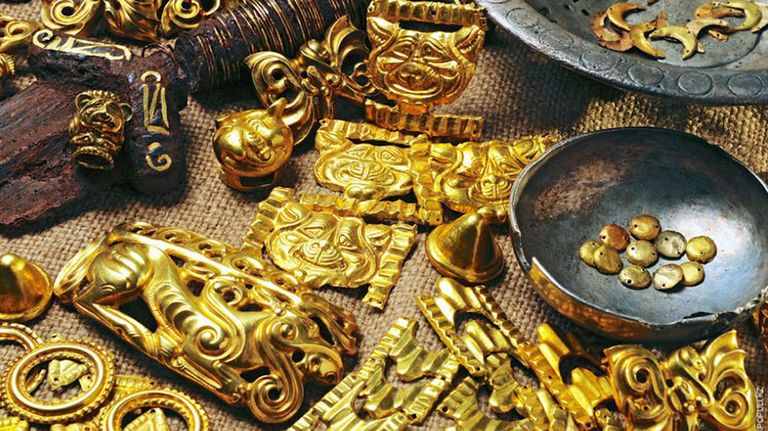Short story about Romanian GOLD

Source
People don't realize or know that Romania had and still has some of the largest reserves of gold in the world. There is evidence that people have been looking for gold in this area since prehistoric times. The most known area where gold reserves have been exploited for so long in Romania is called Roşia Montană. Most people believe that the "Romans" were the first to look for gold here, but recent studies show that it was the Greeks who were migrating towards modern-day Greece, who passed through this area of the Apuseni mountains and looted the local gold reserves.
Next in line, and almost nobody that I ask knows about, it was the "Persians", as Herodotus is telling us, that the emperor Darius started a war against the "Dacic tribes" that were living on the Apuseni mountains to get their gold.

Source
The first attempts to conquer the gold mines of the Dacians date back to the reign of Emperor Domitian, but the conquest was completed by Emperor Trajan.

Source
Trajan inherited a Rome ravaged by reckless spending and debt. For the Roman Empire, the conquest of Dacia would have been of utmost strategic importance. Following the betrayal of Bicilis, one of King Decebal of Dacia's confidants, thousands of chariots carrying 160 tons of gold and 300 tons of silver marched to Rome.

Source
According to some sources, the conquest of Dacia boosted the Roman economy for 100 years. The Roman occupation of Dacia lasted for about 166 years. In the Roman era, over 500 tons of gold and 950 tons of silver left Dacia to strengthen the economy.

Source
Many years later, the Hungarians, Turks, Austrians, and Russians were exploiters and plunderers of the gold in these deposits. It is a little-known fact that cities like Budapest, Vienna, Rome, Istanbul, St. Petersburg, and Moscow were built with gold extracted from these mines to a greater or lesser extent. Following the Roman exploitation of the deposits, there was a break of about 1,000 years, after which the Hungarian kings, followed by the Habsburg Austrian emperors, resumed plundering the gold of the Apuseni. According to historical documents, the Austrians removed 10 tonnes of gold from Transylvania within 64 years.
-ZvbBwcI0tS4AAAEpgrEFQTrV.jpg)
Source
Gold was first mined by the Dacians using sheepskin placed along rivers. Woolen crumbs in the furs retained small, heavier gold fragments, allowing most of the other impurities carried by water to pass through. It is easy to imagine how rich the area was in gold that they were able to catch gold from by using sheep's skins. Until the late medieval period, river gold was found in significant quantities in almost all rivers in the area.

Source
The peak of gold mining in this area was reached during the Austro-Hungarian Empire. It is estimated that despite the rudimentary technical means, a record amount of gold was mined here between the end of the 18th century and 1918. Mining was done only by the strength of the arms, the gold-rich ores being picked out of the mountain's bowels with pickaxes and loaded into wicker baskets placed on mules. The ore was crushed in the famous water jets, then collected on woolen or sheep-fur cloth, as in the days of the Dacians.
Upon studying the current situation of the remaining gold reserves in the Apuseni and Maramures, we discover an entire international gold mining industry that is moving steadily towards the Apuseni Mountains.

Source


Check it out here!!!
Excelente trabajo promocionado en el discord r2cornell.
Excellent work promoted in the discord r2cornell.
Thank you lots!
Congratulations, your post has been upvoted by @oscarps, from the @visualblock curation account
Puedes apoyar a nuestro Testigo @alberto0607 aquí /You can support our Witness @alberto0607 here